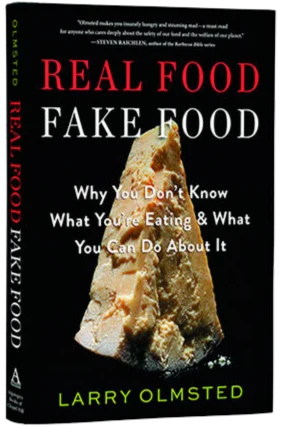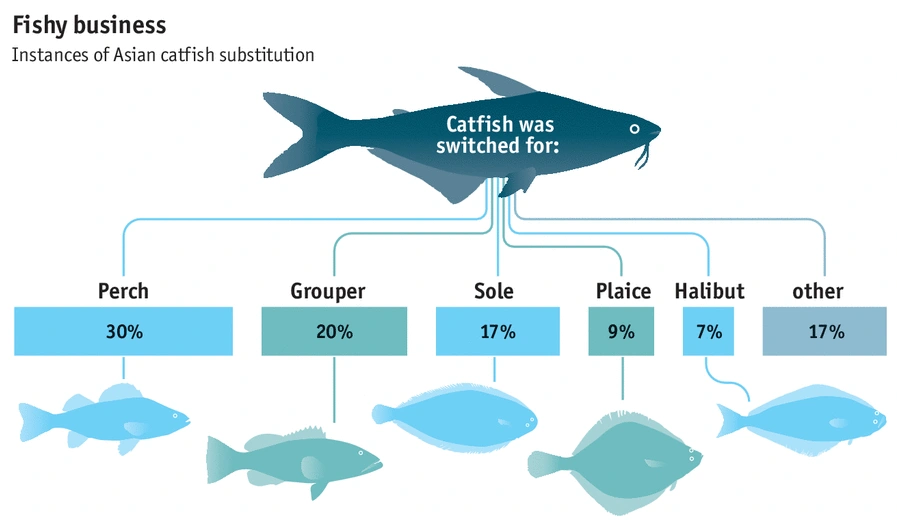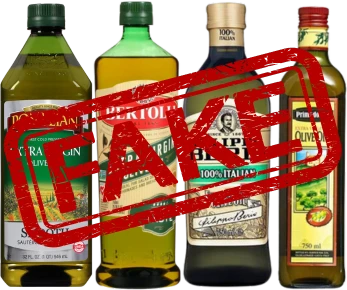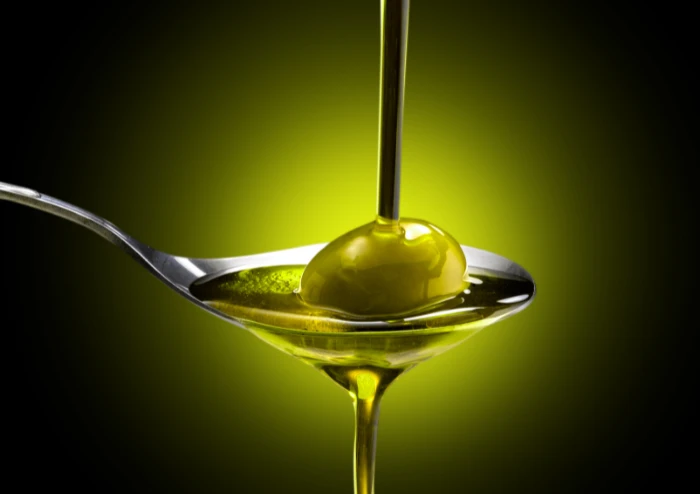So, you think this is olive oil, right?
Wrong.
Well, maybe some of it is, but this is actually a classic example of food fraud. Extra virgin olive oils are being switched out with cheap ones.
That’s right, extra virgin olive oils are being swapped with cheap stuff, and they’re selling it to us as the real deal. It’s like a food magic trick, but definitely not the kind you want to be a part of.
And hold on to your cheese-loving hearts, because that Parmesan you’re sprinkling on your pasta might not even contain a single speck of real Parmesan cheese! Talk about a kitchen con job!
It’s a real mess out there – counterfeits, dilution, substitution, and mislabeling – all part of the food fraud circus.
It’s not just about emptying our wallets; it’s about messing with our health and safety too. Sneaky fraudsters have been pulling this off for centuries, and they’re getting away with it.
The impact of food fraud is no joke. Some estimates suggest it affects at least 1% of the global food industry, racking up a whopping \$40 billion a year in losses.
Even in the land of the Stars and Stripes, the Grocery Manufacturers of America estimates that 10% of the food in the United States is adulterated.
Yup, that means you might unknowingly be carting home a fake food item from the supermarket.
So, what exactly is food fraud? It’s what they call “economically motivated adulteration” – a fancy way of saying they’re scamming us for money, and it’s a potential public health time bomb. Fake food robs us of nutrients, and in some tragic cases, it can even cost lives.

Larry Olmsted, the food fraud detective, wrote the book on this shady business – literally. He defines fake food as anything you buy that’s not what you think it is. It doesn’t matter if it’s legal or illegal – you’re being tricked.
The worst culprits behind this culinary crime spree are all too happy to mess with pricey items like seafood, meat, dairy, honey, alcohol, and spices – especially those fancy and expensive ones that make our taste buds dance.
It’s like that moment when you bite into a cookie expecting chocolate chips, but it turns out to be raisins. That’s the kind of betrayal we’re talking about here!
Larry spent years doing some serious detective work, and he spilled the beans in his book “Real Food Fake Food” back in 2016.

But, one of the biggest food frauds is, quite often, olive oil – it’s a playground for fraudsters.
They sneak in a cheaper oil into the more expensive stuff, but the label still reads “100% extra virgin olive oil.” Sneaky!
Olive oil has been a victim of this game for thousands of years, mainly because it’s valuable and in high demand. They go all fancy and flavor it with beta-carotene or add a dash of chlorophyll to make it look greener.
Next thing you know, you’ve got a cheaper, lower-quality version sitting on the shelf.
It’s like having a Hollywood knockoff instead of the real deal – not cool, right?
Here’s the kicker – even store brands aren’t safe from this trickery. Take my experience at the grocery store, for example. I got two bottles of olive oil, both store brands.
One cost way more than the other, claiming to be a “100% Mediterranean blend of extra virgin olive oil.” It had no expiration date and minimal info.

On the other hand, the pricier one was “100% California extra virgin olive oil, first pressed, cold-pressed, unfiltered, no artificial colors, preservatives, or flavors.”
It even had an expiration date and told me the olives were harvested in October and November 2022, good on my shelf until August 2024. Talk about a difference!
Now, let’s talk about spices, like the precious saffron. A tiny amount cost me a hefty $20 at the store. But brace yourself – saffron can be mixed with other stuff, like plant stems, and sold as the real deal. Sneaky, right?
Spices, spices everywhere, and guess what? Some of them might not be what they seem!
It’s the classic case of “orange, brown, and ground up” being passed off as turmeric – the ultimate bait and switch in the spice world.
But that’s not all – seafood fraud is swimming around too!
Picture this: a less expensive fish species pretending to be a pricier one. It’s like a fishy version of undercover identity theft!
Now, don’t get me wrong – identifying fish species isn’t a piece of cake for most of us. Unless you’re a seasoned chef or fish expert, telling one fillet from another can be as tricky as untangling a fishing net.
That’s probably why fish fraud is so rampant – most of what we eat is white fish, and they all look pretty darn similar.

You might be wondering, “Hey, what’s the FDA doing about all this?” Well, they’re mandated by law to inspect a whopping 2% of the imported seafood – yep, you heard that right, just 2%.
With the US importing around 85% of its fish, that’s a pretty low bar they’ve set. It’s like having a fishy party and inviting the undercover tricksters along!
Food fraud lives in an interesting matrix of intentional and unintentional risks. Unintentional risks are all about food safety and quality, like those pesky accidental foodborne illnesses.
The CDC estimates that about 50 million people get hit by these illnesses each year, but here’s the kicker – only 20%, or one in five cases, can be identified.
So, we’ve got 40 million people falling sick from mystery munchies! Something tells me that fraud might have something to do with it.
On the intentional side, food fraud is cruising alongside food defense, but their motivations are quite different.
Fraud is all about economic gain, while defense is driven by the desire to cause harm.
Imagine having a ton of coffee and turning it into 1.2 tons by adding some cheap filler – cha-ching! Profits just skyrocketed by 20%. Sneaky, right?
But wait, it’s not always the big companies pulling these tricks. The journey from small growers to big trucks, tankers, boats, and processing plants leaves plenty of room for mischief. It’s like a relay race of food fraud – each handoff opens the door to potential deception.
The FDA admits they can’t estimate the frequency or economic impact of food fraud – it’s like an enigmatic mystery wrapped in a riddle.
Over the last decade, lying about an animal’s origin and dilution or substitution have been the top fraudsters, each at 16% of recorded incidents. They’re all about that dilution and substitution game – maybe they forgot to read the rulebook on fair play!
How Americans Are Tricked Into Buying Fake Food
Now, let’s unravel the mystery of how Americans are unknowingly lured into buying fake food!
It’s like a culinary game of hide-and-seek, but this time, the tricksters are messing with our food!
So, picture this: you’re at the store, and you spot that bottle of extra virgin olive oil, looking all classy and authentic.
But surprise, surprise – some sneaky canola oil might have slipped its way in there. It’s like inviting an impostor to the party, and you don’t even know it!
And then there’s this value vanishing act – a sly move where an ingredient or part of the food is intentionally left out, taken away, or swapped altogether. And get this – sometimes, they even throw in non-food substances just to make things even trickier.
Can you believe it?
Non-food substances making their way into our food, playing pretend like they belong!
The pandemic had us focusing on supply chains, and it exposed a spike in labeling fraud – that’s right, fraudsters getting bold during tough times. But hey, why haven’t we put a stop to this?
Well, because we weren’t giving food fraud prevention its due attention.
Preventing food fraud isn’t exactly thrilling – it’s more like being the fire marshal, checking exits and smoke alarms, not chasing after the bad guys.
Now, don’t worry, we do have laws in place to ensure food safety, thanks to the FDA – the Food and Drug Administration.
They’ve been keeping an eye on things since 1906 when the Meat Inspection Act and the Pure Food and Drugs Act kicked in, making it illegal to mess with our food.

President Theodore Roosevelt pushed Congress to pass the Meat Inspection Act and the Pure Food and Drugs Act in response to growing public concerns about the safety and quality of food and drugs.
During the Progressive Era, there were increasing reports of unsanitary conditions in meatpacking plants, as well as the use of harmful additives in food and medicine.
Upton Sinclair’s novel “The Jungle,” which exposed the appalling conditions in the meat industry, had a significant impact on public opinion, including the President himself.
Roosevelt recognized the need for federal regulation to protect consumers from adulterated and unsafe products.
The Meat Inspection Act, passed in 1906, mandated federal inspection of meat and set hygiene standards in meatpacking plants.
The Pure Food and Drugs Act, also passed in 1906, aimed to prevent the mislabeling and adulteration of food and drugs.
Together, these laws were the first true consumer protection laws, ensuring the safety and integrity of the nation’s food and drug industries.
That’s right, back then, manufacturers could sneak whatever they wanted into our grub – it was like the Wild West of food!
But you know what really shook things up? The horse meat scandal!
Imagine horse meat blending into beef all over the UK and Europe, sneaking its way into unsuspecting supermarkets. It was a fraud of grand proportions, and it woke us up to the reality of food trickery.
Sure, catching these fraudsters can be like finding a needle in a haystack – they’re sly and elusive.
But, some do get caught in the act!
Take the case of the “100% Parmesan” that had cheaper Swiss and cheddar cheese plus a little wood pulp called cellulose as a filler. The president of the company got hit with a fine, community service, and probation – a lesson learned the hard way!
The Food and Drug Administration’s mission is to protect us from harmful food, not play label police.
14 Brands That Got Caught

A study at the UC Davis Olive Center revealed that 70% of the major olive oil brands in many US grocery stores have been diluted with cheaper alternatives like canola, sunflower, or soy. These imported EVOO often fails to meet USDA (United States Department of Agriculture) standards.
- Antica Badia
- Bertolli
- Carapelli
- Colavita
- Filippo Berio
- Mazola
- Mezzetta
- Pietro Coricelli
- Primadonna
- Pompeian
- Safeway
- Sasso
- Star
- Whole Foods
Keep These Questions In Mind To Help You Spot Food Fraud
Now that we have the lowdown, and the facts, it’s time to arm ourselves with some handy tips to outsmart those food fraudsters. It’s like a little game of food detective, and we’ve got the tools to keep them at bay.
1. What type of product is it?
First things first – know your product! Whether it’s something you apply to your skin, ingest, or plug into the wall, understanding the quality and expectation of the product will make you a savvy shopper.
If, for example, four manufacturers are selling the same product, but one is marketing it with added benefits, avoid that one.
If, on the other hand, three of the exact same products are being sold for $25-$30, and you came across one for $15 – avoid that one.
2. Can you recognize the difference between the products?
If you can’t easily tell the difference, that makes you more vulnerable to fraud.
If I drink scotch, I couldn’t tell a difference between a $50 bottle and a $5,000 bottle. So I know I could be deceived at that point.
3. Do you know the retailer or the supplier? And do you trust them?
Take a peek at the fine print on that cereal box or juice bottle – it’s there for a reason. Make sure you know and trust the retailer or supplier, especially when shopping online.
It’s a bit like navigating a jungle, but if you find reputable sources, you’re on the right path.
4. Are you buying this item online?
The supply chain becomes a bit of a mystery when you go digital. Investigate the website, see if it’s legit, and find reliable suppliers.
Remember, not all that glitters online is gold.
5. Complain.
Okay, it’s not a question, but the food fraud prevention think tank says if the retailer is legit, they will want to know.
Remember, manufacturers and retailers can be the victims as well.
Legit retailers want to hear from you, and your feedback helps bust those fraudsters.
The FDA also relies on consumers reports. In recent decades, fraudsters have gotten more sophisticated in the techniques they use to fake the food products.
And that means that our detection methods and our test methods and standards have to be better at detecting fraud.
That’s why the U.S. Pharmacopeia Convention provides a framework for organizations to detect its vulnerabilities.
We have food fraud mitigation guidance, so it is a supply chain risk management tool to really take a look at which ones are the more risky products suspected to be adulterated.
Sometimes it feels like this is not that big of a deal, but the more fraudsters are able to achieve, the more we end up paying in the end as consumers.
These cases rarely result in criminal penalties, so don’t get your hopes up.
If you want to be like a drug dealer and import heroin, and you get arrested on a large scale, you’re going to go to jail.
But if you can make $80 million importing adulterated honey, and then you’re going to get a slap on the wrist and some fines, why wouldn’t you do food instead of drugs if there’s no basically criminal downside to it?
So as long as we don’t take it seriously, why should the perpetrators take it seriously?
What we want is the food industry just to be focused on making food and not have to worry about looking over our shoulder, checking different suppliers.
So, arm yourselves with knowledge, be vigilant shoppers, and together, we’ll keep those food fakers at bay. Let’s feast on the delights of honest, genuine food!




















